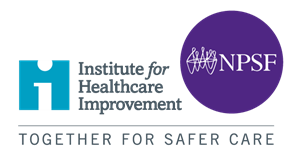Why a Culture of Safety?
The statistics on patient deaths due to medical error are alarming. Even still, these statistics don’t take into account serious temporary or permanent physical and psychological harm caused by medical error, nor do they include harm to the healthcare workforce. Medical errors impact caregivers greatly, from concern for their patients and job, to possible isolation, depression and self-harm. The feeling of desolation after an incident is typically worse in organizations that lack supportive systems.
Overall, the rate of error leading to harm in healthcare environments is shockingly high and can absolutely be reduced. Safety is not a topic that can be delegated, it starts with senior leadership and is the responsibility of every individual within the organization.
Safety as a Core Value
A hospital’s culture and values contribute to positive changes in the safety of both patients and the workforce. A 2019 survey by the Agency for Healthcare Research and Quality found:
- Just 66% of staff respondents would give their unit/work area a positive patient safety rating.
- A little more than half (54%) of staff indicated that hospital management seem interested in patient safety only after an adverse event has occurred.
- Nearly two thirds (65%) of respondents said that, in their unit, there is a lack of support for staff involved in patient safety errors.
Although all humans make mistakes, including physicians and other care providers, the role of the healthcare organization is to create processes that prevent errors from causing patient harm. All errors are learning opportunities to improve processes, even when no harm is involved. The responsibility for system-based errors and resulting financial costs ultimately fall on the CEO and Board of Directors, who are held accountable for ensuring a culture of safety.
Safety is not just an improvement initiative; it is a promised core value that directly impacts the well-being of patients and the workforce. In the long run, patient and workforce safety will not only be a moral imperative but will also be critical to sustainability and essential to delivering on value.




